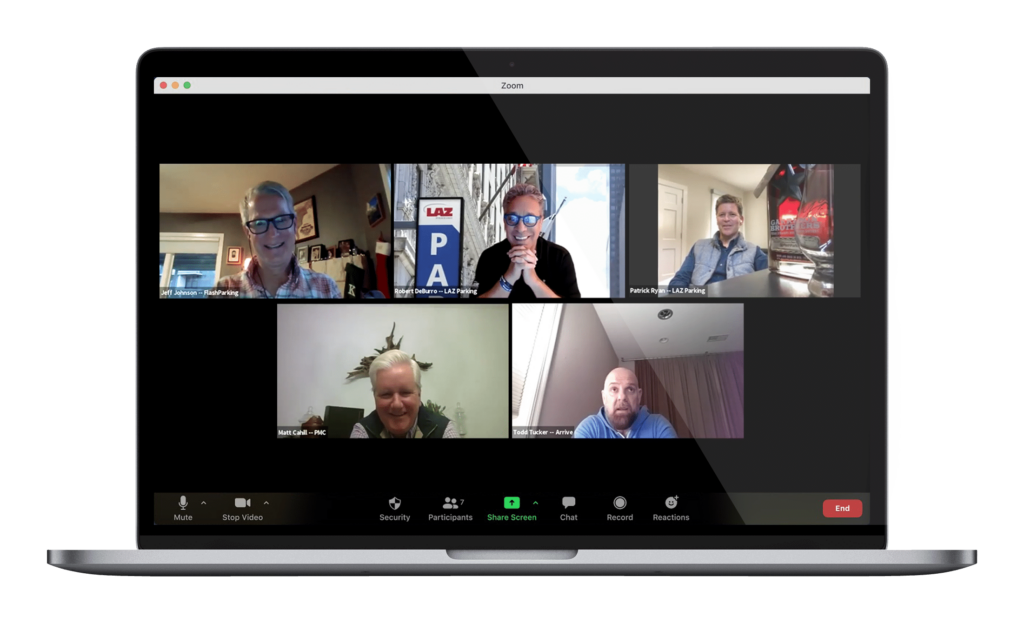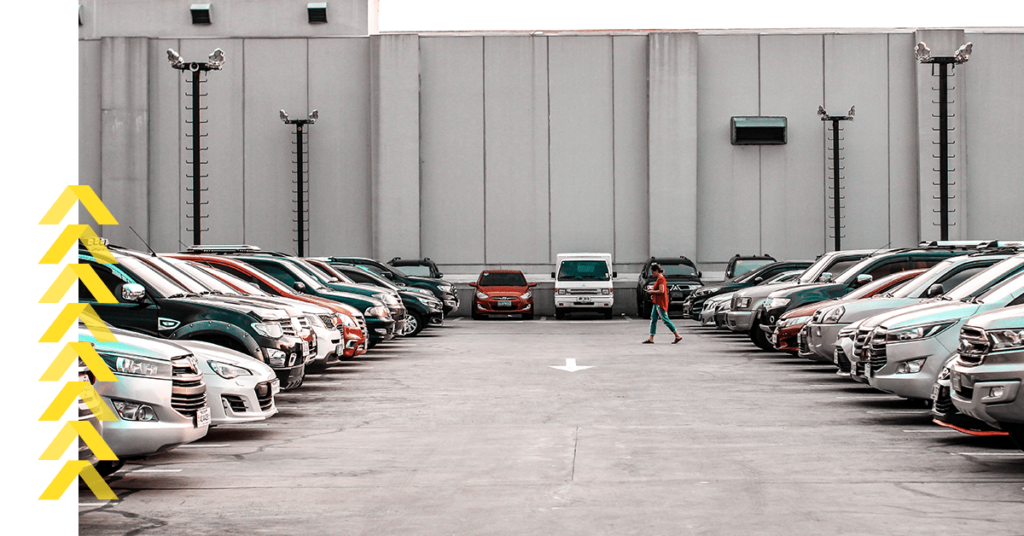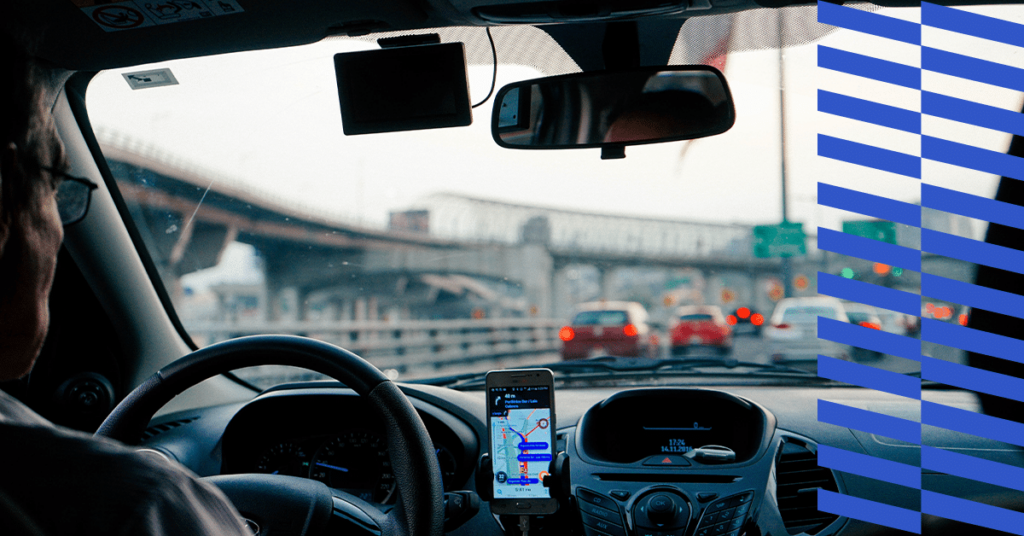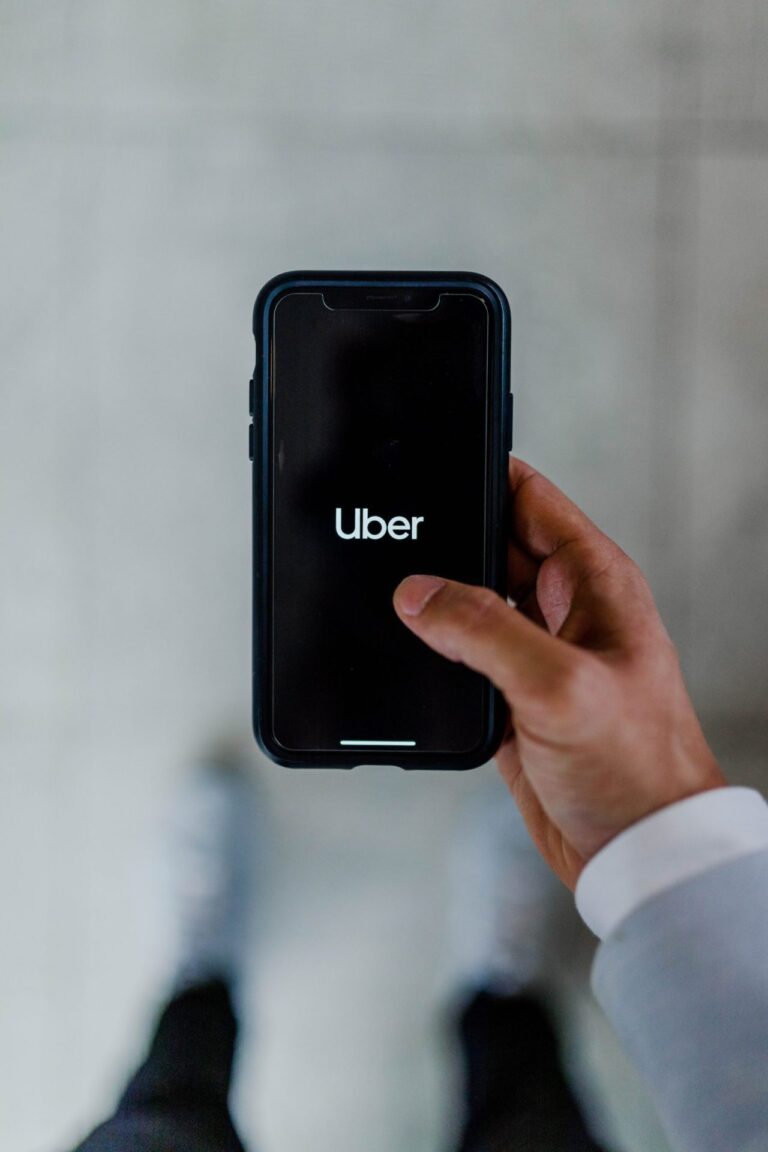For parking industry mainstays – the people who have been around long enough to see the ups and downs of the industry – 2020 was in many ways unprecedented. But it was also in a sense just the resurfacing of a lesson learned years prior.
Parking Meets Uber Ridesharing

“I’m going to take you back in time. Close your eyes and go back to 2011.”
Jeff Johnson opens a roundtable discussion of old business partners, peers, and clients with this simple ask. They are all seated at their dining room tables or home offices, sipping bourbon, staring at each other through a screen. This isn’t the convention floor or lobby bar they’re used to meeting at, so Jeff kicks things off by bringing everyone to the same place. And then, he starts painting the picture.
“I’m living in the outer avenues of San Francisco, out by the ocean. Can’t find a taxi to save my life. And I hear about this beta app where I can get a car – it’s something called Uber. So, I start using this little app. It’s a black car at that point. And then around 2012, 2013, Uber X comes out and automatically, it’s something I’m using frequently,” he recalls.
This story sounds familiar to many of the people at this virtual table, and probably to many of you, too. It’s the story of a company called Uber that slowly broke into our routines before completely changing them. Uber wasn’t just a new player – it was a completely new game: ridesharing.
It started out as a more convenient way to call a taxi, but today, ridesharing is deeply ingrained in the way we move. For some people, it’s a way of life. For others, it’s a way to commute. For travelers, it’s the often choice over renting a car.
And perhaps most influentially, the idea that you have to own a car in cities (less New York City) has lost a lot of its weight in the last decade. Looking back, we can see that 2011 wasn’t just a signal of new consumer behavior, it was a harbinger of a much larger shift in how people think about transportation.
The ridesharing economy has ballooned since 2011, encompassing competitors like Lyft along with an entirely new breed of shared vehicles: eScooters and eBikes.
The Parking Business Pivots

For those of you who don’t know Jeff, today he is the VP of Customer Success at FLASH. But before this role, he worked as a commercial parking operator for 12 years. While he started warming up to the idea of shared rides, so did his customers. Eventually, this convenient tool introduced to his personal life started putting a dent in his professional one. The once steady stream of cars went stagnant as consumers transportation behavior changed and soon, Jeff had to start thinking about different approaches to revenue.
After remembering his own experiences, Jeff turns it back to his peers, “do you remember those days when you were trying to find ways to survive in that kind of early disruption of Uber and Lyft and TNCs? Did you deploy any strategies that helped you back then again in 2020 as we saw revenue decline by about 90% across the industry? What did you learn back then that you’re applying today? “
Patrick Ryan, the VP of Innovation at LAZ Parking, was the first to chime in, noting that people weren’t as quick to lower their rates. “Back then, we were just trying to get cars into garages however we could. But this year, there were no cars to get into garages.” Ryan actually turned to TNCs for inspiration, realizing that “there’s not a lot of difference between a TNC and a taxi, it’s just easier to use.” He turns that around to his own work in parking and asks, “ok, how do we make this easier?”
For Todd Tucker, the Senior VP of Market Development & General Counsel at Arrive, the lesson that stuck around was the importance of an open mind. That was what he responded with in 2011. And in 2020, an open mind meant investing in touchless, frictionless technology when the marketplace suddenly shifted to value those things tenfold. Tucker believes that “parking, like other older industries, tend to suffer when they are slow to change. So, when you’re suffering, that means it’s time to change.”
Looking to Uber During Covid

Ridesharing was just the beginning. Over the next decade, parking professionals would see how the growing consumer affinity for delivery and rise of ridesharing affected parking demand. But nothing would be as shocking as the events of 2020.
When commutes ceased almost completely and nights out turned into takeout, the parking industry experienced occupancy at near-zero levels. This shift in consumer behavior is evidence of technology’s role in the speed at which major events precede their cultural response. Consumers had online alternatives for every part of everyday life – from food delivery to workout videos to virtual meetings — already at their fingertips. It just took a major event to cement that transition.
Conventional wisdom would dictate to parking owners at this time that price reductions were the way to bring occupancy back up. But lowering food prices wasn’t how grocery stores responded; rather, they leaned in to the surging demand for delivery, revamping stores for personal shoppers and delivery drivers rather than individuals.
Industry professionals that had weathered the ridesharing storm a decade earlier knew how to respond, because they’d done this before. Robert DeBurro certainly has. DeBurro is the Managing Parter and Executive VP at LAZ Parking. “When this comes along, you’re like, okay, we’ll figure it out. We figured it out with everyone here. And I think it makes us stronger and more prepared for whatever the future has to come. People have learned to remain optimistic and be positive,” he says to the group.
His outlook is inspiring – but it’s also driven by strategy. As seasoned parking professionals like DeBurro started seeing changes in how people and goods got around, they knew what to do. First, you look at the data.
With as many as 77% of Americans saying they will prefer contactless methods of paying for merchandise, food, beverages, and services post-pandemic, it appears that how people pay might for the first time be more important than how much they pay. For parking, leaning into the challenge with this knowledge meant introducing touchless technology, mobile payments, and app reservations.
The pandemic sent online ordering and, as a result, delivery surging. eCommerce grew as much in the first six months of 2020 as it had over the past ten years, prompting forces like Amazon to grow their delivery fleets. And with straight-to-your-door goods and services showing no signs of slowing down, experts like Matt Cahill, the President of Parking Management Company, are ready to accommodate these emerging mobility demands. Services like EV charging, fleet management, and even staging for Uber and Lyft ridesharing solutions are right around the corner. “People are looking for revenue. They’re looking for net new dollars, they’re looking for opportunity and they are more open than they ever have been to trying new things,” Cahill says.
Making the Uber Covid Connection

While the answer to 2011 and 2020’s challenges were undoubtedly different, the learnings from the former taught a timeless approach to facing challenges that parking professionals have carried with them. They understand that behavioral changes are not just outputs, they are inputs for future business models and industries we don’t even know exist yet.
It’s how eScooters became an overnight success; consumers didn’t have to learn a new way of interacting with technology, they’d already been primed by ridesharing. Consumers know how to find a ride from their phone, meet that ride, and get where they’re going with transparent pricing and a lack of ownership. Warming up to ridesharing wasn’t just about consumers changing behavior to prefer Uber and Lyft over their own car, it was consumers changing behavior to understand they don’t have to own what gets them around.
And in the same way, it was the style of thinking, of approaching problems, that these industry mainstays brought into 2020 – not a carbon copy of 2011’s strategy.
It follows that parking’s next challenge won’t be remedied by the same touchless solution that worked in 2020. So what is next? How do we take these learnings and apply them to the next challenge?
Data First With access to so much information about consumers, it’s a disadvantage to disregard data. Lead with a stronger understanding of the target consumer, their criteria for modes of transportation, and new mobility behaviors that they’re adopting.
Solve for a Problem, not a Solution Look for the root of the problem before you look for the solution. Lowering prices when demand is near zero doesn’t work. And adding more features when prices are out of touch doesn’t either. Lead with the challenge and then find a solution.
Adapt to Thrive There’s no singular, timeless model for doing business. The best way to create and maintain relevance is to adapt with the market and design your operations to be dynamic.

